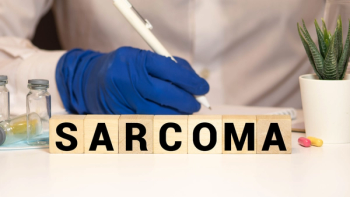
- Fall 2007
- Volume 6
- Issue 5
Dealing With Disfigurement
Fewer sarcoma patients are facing limb amputation with limb-salvaging surgery, but for survivors like Joshua Isaac, physical and emotional rehabilitation can help.
IN THE PAS T, about half of sarcoma patients received amputation; that has dropped to about 5 percent, according to the American Cancer Society. The dramatic drop reflects not only the similar overall survival rates between amputation and limb-salvaging surgery with radiation, but also a new focus on preventing disfigurement and retaining a good quality of life for patients.
Joshua Isaac, of Seattle, was 25 when he was diagnosed with epithelioid sarcoma in his left hand in 1997. He chose wide resection surgery, cutting out the tumor along with healthy tissue around it, because he was concerned about his career and how he would look without a hand.
Surgery removed the tumor, along with a major tendon and nerves, which doctors replaced with tissue from his left foot. Isaac still had mobility in some of his fingers, and it appeared the sarcoma hadn’t spread.
After a few years, he began having trouble moving his fingers; he shrugged it off as scarring from the radiation treatment. But his doctors soon discovered a recurrence of the sarcoma.
“They call it a squirrelly type of cancer,” Isaac says. “It has a way of hiding out. One malignant cell somewhere in the body starts multiplying and before you know it… .”
By this time, Isaac had a different perspective on life. He was established in his career and had two young children that he wanted to see grow up. The cancer had spread throughout the tissue of his hand, and there was no possibility of limiting the spread without amputation. On July 1, 2004, Isaac had his hand amputated.
“It wasn’t easy, for sure,” Isaac says. “My image of being without a hand, and some of the psychological effects of not being able to do some things—like wearing a baseball mitt and playing catch with my son—is definitely hard to fathom.”
After the initial struggle, however, Isaac says he accepted the amputation.
“I’m OK with it,” he says. “I think that in living with it and getting on day-to-day, you just learn to make your world work for you.”
Brent Van Dorsten, PhD, a behavioral medicine specialist who works with amputees at the University of Colorado Health Sciences Center in Aurora, expects most amputees like Isaac to recover function in the long term.
“Most people think loss of a limb must change patients emotionally, and cause some sort of long-term emotional degeneration,” Van Dorsten says. “In fact, after years of working with people with amputation, you learn a lot more about human resilience than you do about chronic emotional dysfunction.”
The psychology of amputation suggests what matters most in rehabilitation is what patients think of themselves, and that the prosthetic they choose matches their goals.
“If you had a lower limb amputation, you may not become a field-goal kicker. But there is the chance that you’ll be able to run, exercise, or play soccer,” Van Dorsten says. “In a lot of things, the question is not yes or no, it is how.”
In Isaac’s case, he wanted to be able to play with Legos with his kids and perform other fine motorskill tasks, so he chose his hook-like prosthetic for functionality, rather than appearance.
“There’s probably not much that changed before I lost my limb to after in terms of what I do around the house,” he says. “I wash the car, I mow the lawn. I’m still as active as I was before. I get looks; it’s uncomfortable, but I think it’s my red badge of courage. It’s a scar I’ve earned and it’s OK to talk about it.”
Joshua Isaac produced My Left Hand, a movie about his emotional struggle with sarcoma recurrence. For more, see
Articles in this issue
about 16 years ago
More About Painabout 16 years ago
The Problem with Pain Centersover 18 years ago
Beneficial Riskover 18 years ago
The New Sarcoma Storyover 18 years ago
The HRT Connectionover 18 years ago
In Search of Quality Mammographyover 18 years ago
Powers of Predictionover 18 years ago
Progress in Treating Multiple Myelomaover 18 years ago
Use As Directedover 18 years ago
All in the Family




